Introduction
Choosing the right medium for your art is essential for effective self-expression and bringing your creative vision to life. The art medium—whether it’s paint, pencil, clay, or digital software—determines the tools and materials you use, and it profoundly influences your artistic process and final outcome.
In this blog post, we’ll explore different art mediums (painting, drawing, sculpture, digital, and more), discuss their characteristics with pros and cons, and outline factors to consider so you can find the best art medium for your style. By understanding the options and experimenting, you’ll be well on your way to discovering the medium that fits you best.
Understanding Art Mediums
In visual art, medium refers to both the type of art (e.g. painting, sculpture, printmaking) and the materials an artwork is made from
Simply put, an art medium is what you use to create art—such as oil paint, charcoal, clay, or a digital tablet. Each medium has unique properties that affect how you work and how the artwork looks. For example, an oil painting might allow rich blending and texture that a colored pencil drawing cannot, while a digital illustration can achieve effects impossible by hand.
The choice of medium is one of the most important decisions for an artist because it shapes the expressive possibilities of the piece and the experience for both artist and viewer
There is no single “perfect” medium; the right choice depends on your artistic goals, style, and circumstances.
Below, we’ll dive into some of the most popular art mediums and their characteristics, so you can better understand the options available. Whether you’re wondering oil vs. acrylic painting differences or the appeal of digital art vs. traditional art, this guide will help shed light on each medium’s strengths and limitations.
Popular Art Mediums and Their Characteristics
Painting
Painting mediums offer a world of color and texture, each type of paint bringing its own feel to the canvas
The major painting mediums include oil, acrylic, watercolor, and gouache, and each is best suited for certain styles and effects:
Oil Paint: Oil paints are slow-drying and pigment-rich, used by artists for centuries. They require a primed canvas or board and typically need solvents (like turpentine) for thinning and cleanup, which can be smelly and demand good ventilation.
The big advantage of oils is their extended working time—oil paint stays wet for days or even weeks, allowing you to blend and rework colors at a relaxed pace.
Once fully cured, oils are highly archival; in fact, most museum paintings from before 1950 are oils. Oils are great for realism and fine detail (thanks to their smooth blending) and for techniques like glazing and impasto (thick textured layers).
Pros: long working time, rich color depth, and a proven longevity.
Cons: slow drying, requires more setup and cleanup, and can be challenging for beginners to master.
Acrylic Paint: Acrylics are a modern, water-based medium (invented in the 1950s) made of pigment suspended in a polymer resin. They are fast-drying, easy to use, and low-odor, thinning and cleaning up with plain water.
Thin acrylic washes can dry in minutes, whereas thicker applications dry in a few days, resulting in a permanent, somewhat rubbery film (since acrylic is essentially plastic when dry). Acrylics are extremely versatile: you can dilute them for watercolor-like transparency or apply them thick for textured effects.
They adhere to many surfaces (canvas, paper, wood, etc.) without special preparation, making them convenient for all kinds of projects.
Pros: quick drying (you can layer rapidly), very beginner-friendly, no harsh chemicals needed, and relatively affordable.
Cons: the quick drying time can make blending challenging (paint can dry on your brush or palette), and colors may appear a bit darker when dry. Some artists also feel acrylics lack the “luminosity” of oils, but modern high-quality acrylics are improving and are expected to last as long as oil paintings without issues.
Watercolor: Watercolors are pigments bound with gum arabic that you mix with water to apply, usually on paper. They are loved for their luminous, transparent washes – think of delicate layers of color that let light reflect from the white paper beneath.
Watercolor typically comes in hard pans or tubes; either way, it can be re-wetted and remains water-soluble even after drying. This medium is excellent for airy, expressive paintings and subtle gradations.
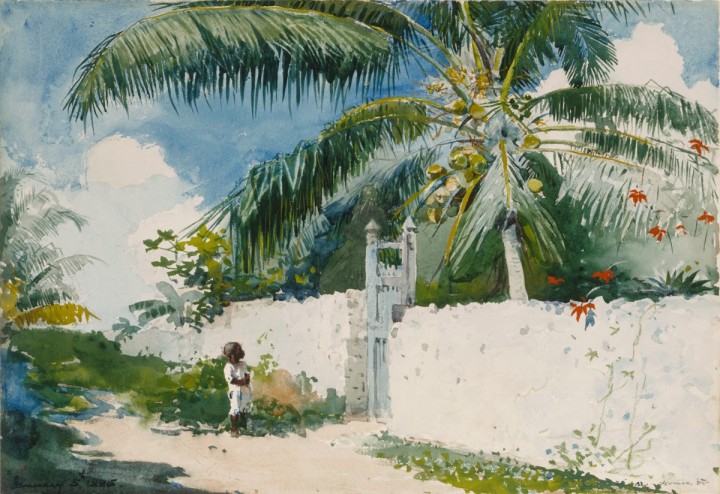
A Garden in Nassau – 1885 – Watercolor painting by Winslow Homer
Pros: watercolors are very portable and require minimal supplies (just paint, water, and paper), and they create unique ethereal effects.
Cons: they can be unforgiving – mistakes are hard to cover since you generally can’t paint light colors over dark (you reserve the whites by leaving paper showing). Watercolor demands some planning and control; too many layers can turn muddy.
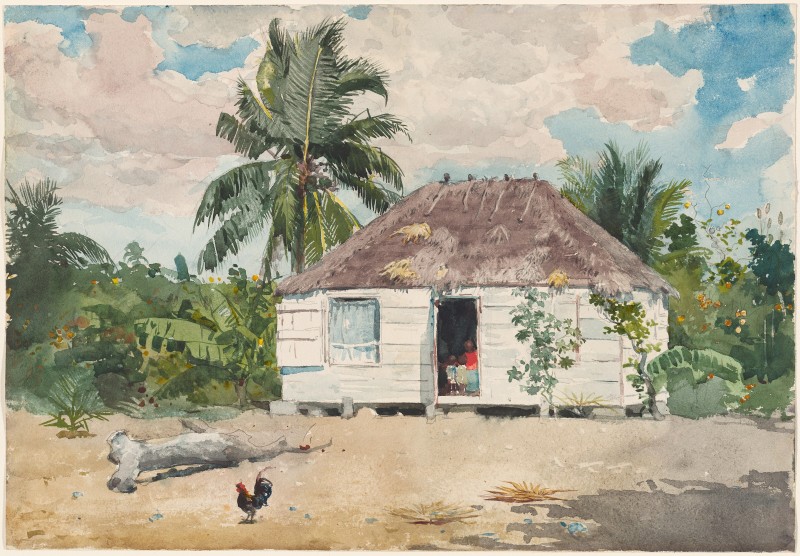
Native Hut at Nassau – 1885 – Watercolor painting by Winslow Homer
Also, watercolor paintings are prone to fading if exposed to strong light over time, so they should be kept behind UV-protective glass for longevity (many pigments are now lightfast, but caution is still advised). Despite the challenges, many artists embrace watercolor’s “special magic” in the unpredictable flow of pigment and the glow of white paper shining through.
Gouache: Gouache (pronounced “gwash”) is an opaque watercolor. It uses similar pigments and gum arabic binder but has a higher pigment load and often an added chalky white, giving it a matte, opaque finish.

Gouache Painting by Nishikant Palande
Gouache can be used flat and solid, which makes it popular for illustrations and graphic styles, yet it can also be watered down for softer effects. Unlike transparent watercolor, you can paint a lighter color atop a darker one with gouache, making it a bit more flexible for corrections or layering.
It tends to dry to a slightly different value (dark tones may dry lighter, and light tones darker) but dries faster than traditional watercolor and with more consistent color (watercolors often dry lighter than they appear when wet).
Pros: vibrant, flat color application, easy to achieve solid coverage, and you can work from dark to light. It’s great for bold, graphic artworks and is favored in design and illustration for its crisp look.
Cons: Gouache can reactivate with water even after it’s dry, so finished pieces should be kept safe from moisture. Heavy layers might crack if applied too thickly.
Overall, it offers a nice middle ground between watercolor’s washy transparency and acrylic’s opacity, and it’s excellent for artists who want to combine expressive painting with more control.
Drawing
Drawing mediums typically involve dry materials used on paper, from precise graphite pencils to expressive charcoal and everything in between. Drawing is often the starting point for artists due to its immediacy and low cost, but it’s also a rich medium in its own right. Here are some common drawing mediums and their characteristics:
Graphite Pencils: The familiar pencil is made of graphite and clay, graded from hard (H) to soft (B). Graphite is excellent for detailed, controlled drawing.
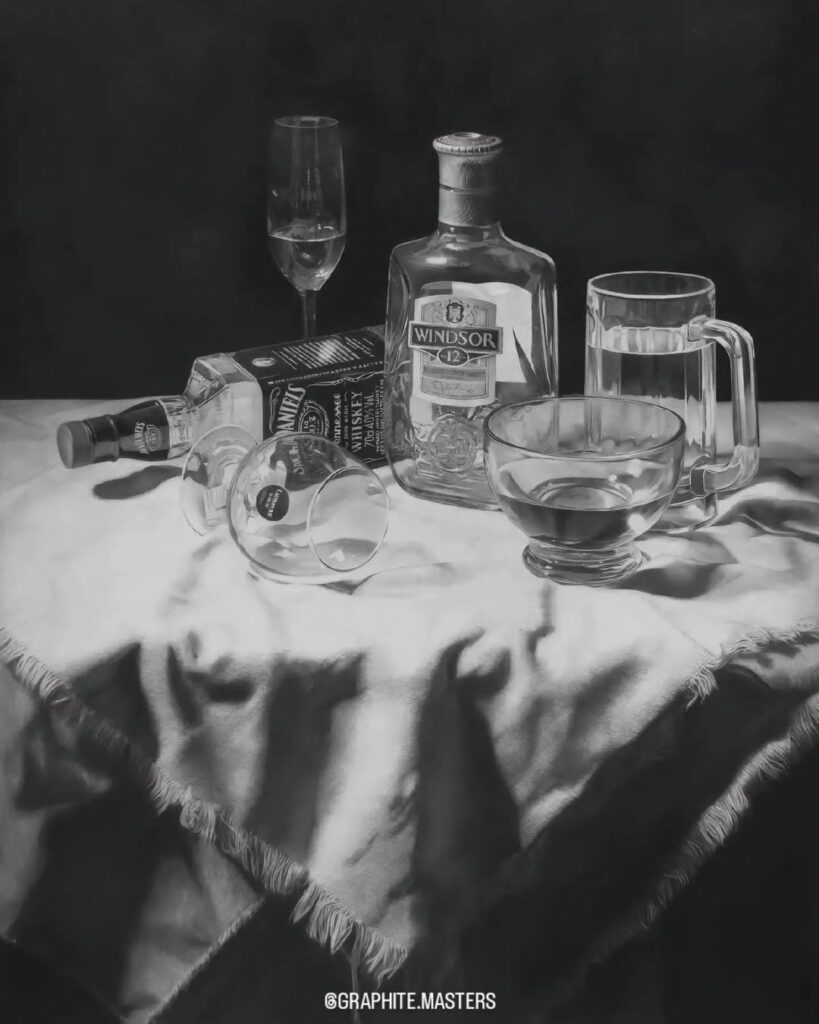
Graphite drawing by Chang Shuo
It produces fine lines and can be blended for shading, though very soft graphite creates a shiny dark tone rather than a deep matte black.
Many artists consider graphite the ideal tool for finished, detail-rich drawings. It’s erasable (to an extent), making it forgiving for beginners. However, large areas of deep shadow are hard to achieve with graphite alone (they’ll look silvery), and that’s where charcoal comes in.
Charcoal: Charcoal is carbonized wood (often willow or vine) and comes in sticks or pencils. It creates a rich, matte black mark and is known for its expressive, bold strokes.
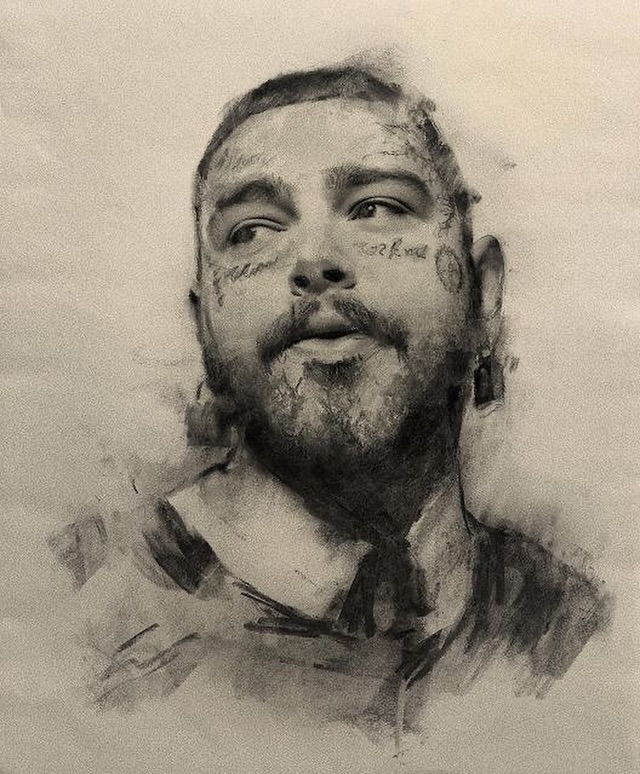
Charcoal drawing by John Fenerov
Charcoal excels at loose, gestural drawing and is often used for sketching out compositions or life drawing. Because it’s so soft and powdery, it blends easily to create smooth tones, but it also smudges easily (fixative spray or careful handling is needed to preserve a charcoal drawing).
Many artists prefer charcoal for its intensity and spontaneity – it’s perfect for capturing emotion and movement in a sketch. Compared to graphite, charcoal isn’t as suited for minute detail (unless used in pencil form), but it can create dramatic contrast.
In fact, graphite vs. charcoal is often a trade-off between precision and expression: graphite is usually used for fine detail work, while charcoal is commonly used for bold, dramatic work and quick studies. Pros of charcoal: deepest darks, expressive line variation, a very tactile experience. Cons: messy (expect black fingers!), less precise, and drawings must be protected from smearing.
Ink (Pen & Ink): Ink drawing involves liquid ink applied with pens, dip pens, or brushes. Ink offers intense blacks and clean, decisive lines. It’s great for high-contrast illustrations, calligraphy, or comic art.
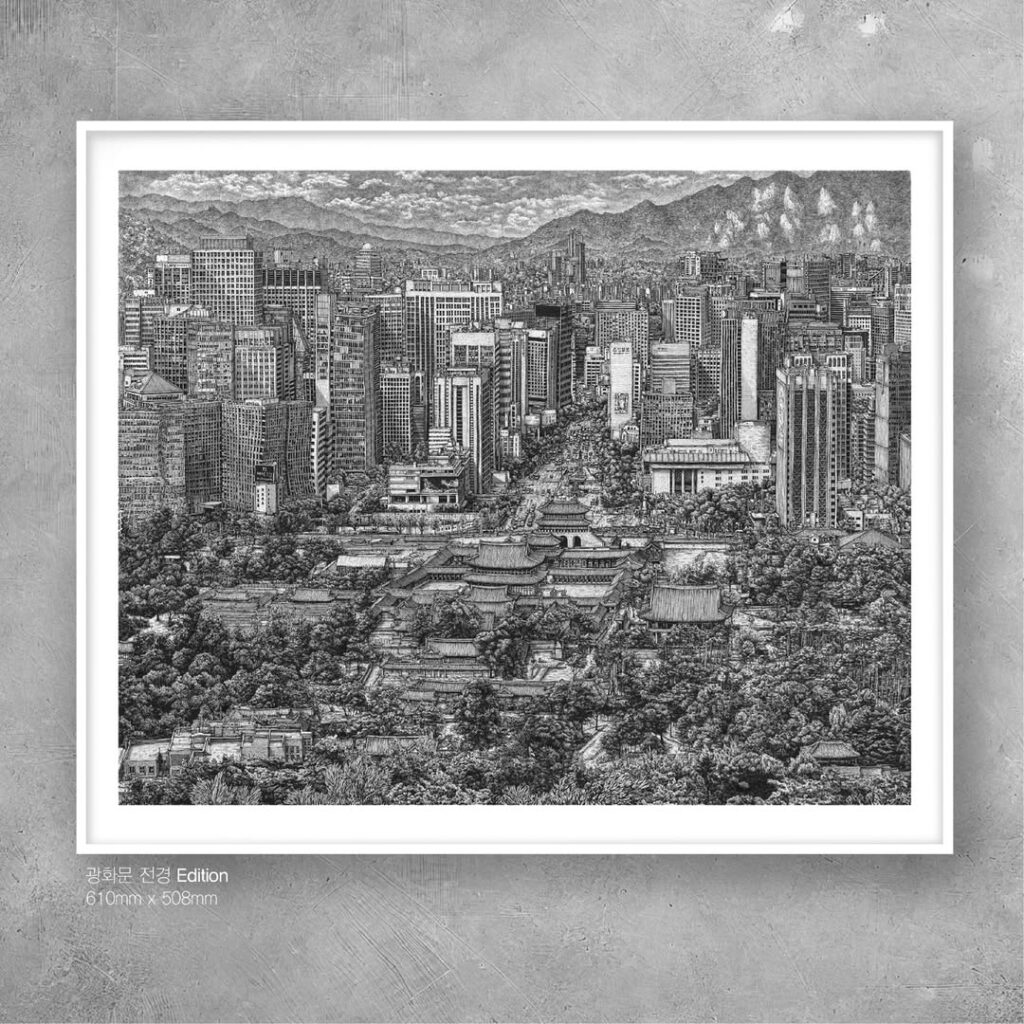
The defining characteristic of pen and ink is that it’s permanent – once you put a line down, there’s no erasing it. This can be intimidating but also exciting: “Drawing in pen and ink is like walking a tightrope… Once a line is on the paper, there’s no going back. You are committed.”. Because mistakes can’t be easily fixed, ink drawing trains you to be deliberate with your strokes (though techniques like using white ink or gouache, or scratching the paper, can help correct small errors).
Different inks and pens can produce a variety of effects: fine technical pens for controlled lines, fountain or dip pens for expressive variation, and brushes for thick, gestural strokes or washes.
Pros: bold and graphic results, ideal for detail with a twist of style (hatching, stippling, etc.), and can be combined with watercolor washes.
Cons: unforgiving of errors, requires confidence, and some inks can fade or smear if not waterproof. (Using archival, waterproof inks on quality paper will ensure drawings that last many years without fading.)
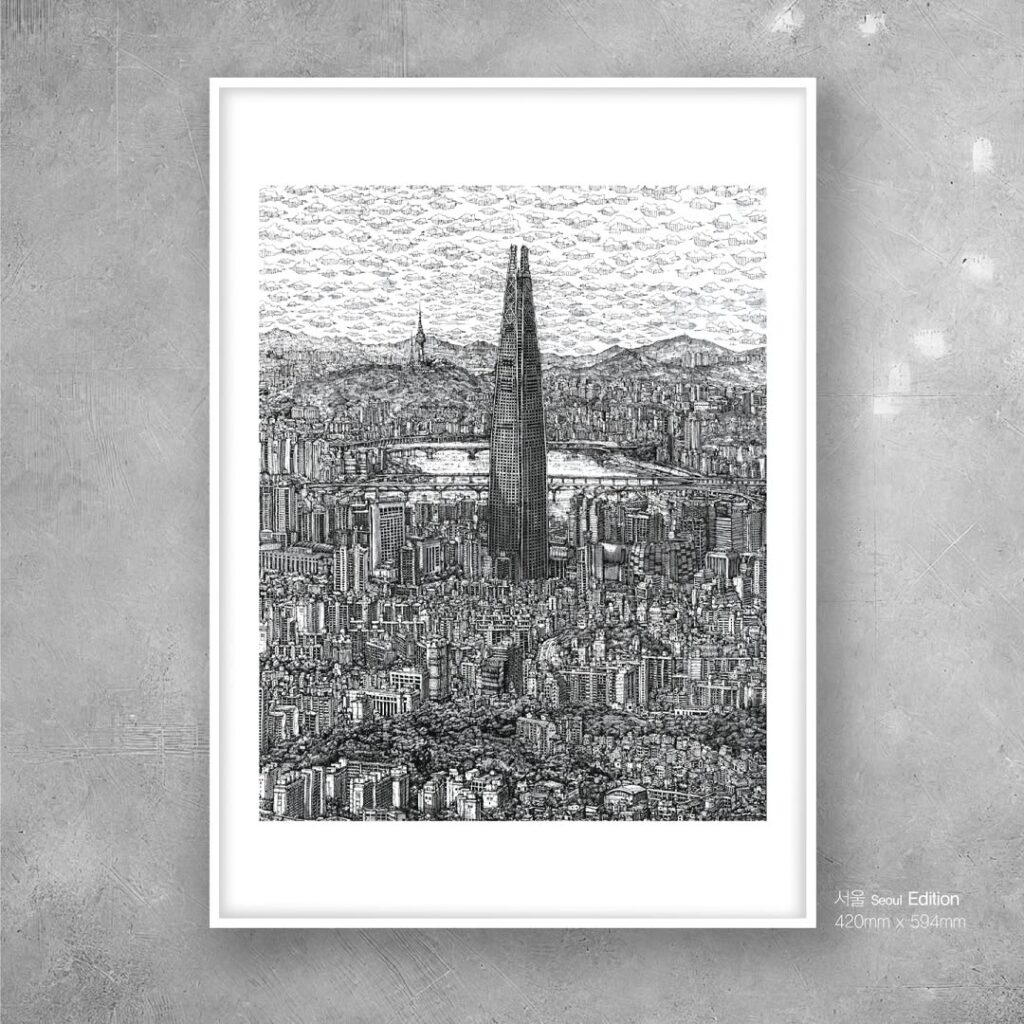
Pastels: Pastels are pure pigment sticks and are often categorized as a painting medium, but they’re used in a drawing-like manner, so we’ll include them here.

Soft Pastel drawing by Ağazadə Nihad
There are soft pastels (chalky texture), hard pastels, and oil pastels (waxy). Soft pastels are loved for their vibrant colors and blendability – you can smudge them with fingers or tools to get painterly effects right on the paper.
They’re great for expressive, impressionistic artwork and can also achieve a high degree of realism in skilled hands. Because pastels lay down so much pigment, the colors are brilliantly intense and don’t easily dull (there’s no liquid binder in soft pastels to cause color change as they age, unlike paints).
However, pastel works are fragile; the pigment can be easily smudged and must usually be fixed with spray or framed under glass. Hard pastels and pastel pencils contain more binder, making them better for fine details and line work – artists often start with hard pastels/pencils for sketching and detail, then layer soft pastels for rich color.
Oil pastels, by contrast, behave more like crayons – they don’t smudge as much and never fully dry, giving a distinct creamy look (but they are incompatible with other pastel types).

Under Verdant Shadows (2024) – Oil Pastel Drawing by Viktoria Maliar
Pros: unparalleled color brightness, blendable like paint, and no drying time or cracks to worry about. Pastel is also one of the most archival media if preserved properly; a pastel drawing from 200 years ago can look as fresh as the day it was made
Cons: can be messy (pastel dust everywhere!), requires toothy paper and careful handling, and details can be tricky with very soft pastels. If you love drawing and color, though, pastels offer the best of both worlds – drawing with pure color.
Sculpture
Sculpture mediums involve creating art in three dimensions, using materials like clay, metal, wood, stone, or modern synthetics. Each sculptural medium has unique working methods and aesthetic qualities:
Clay (Ceramics): Clay is one of the oldest and most accessible sculpture materials. It’s extremely malleable – you can shape it by hand or with tools, add or subtract material easily – which makes it ideal for beginners and professionals alike to explore forms.
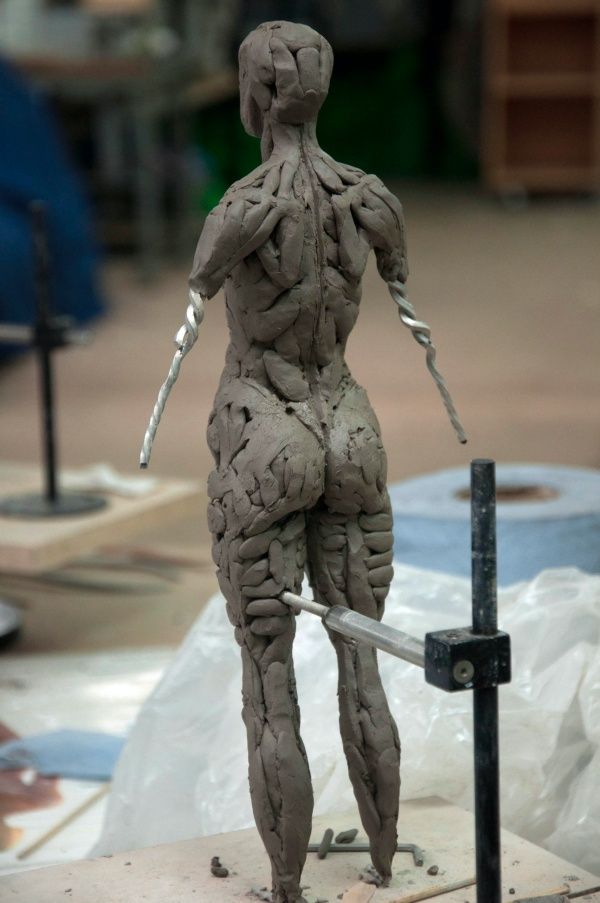
Clay is versatile: you can keep a sculpture raw (air-dry clay or plastilina clay for animation models), or fire it in a kiln to make it hard and permanent (ceramics like terracotta or porcelain). Many sculptors use clay for preliminary models even if the final piece will be cast in metal, because clay is so easy to work with.
Pros: inexpensive, forgiving (keep it damp to continue working; if you mess up, you can often reshape it), great for detailed textures or smooth forms.
Cons: Water-based clays need to be kept moist while working and can crack or break if mishandled. Finished clay (ceramic) pieces are durable but can shatter if dropped. Also, working on a large clay sculpture requires an internal support (armature) and access to a kiln for firing if you want it permanent.
Overall, clay is perfect for learning and for artists who love working tactilely with their hands.
Wood: Wood carving is a traditional sculptural art—think of totem poles or intricately carved statues. Wood offers a warm, organic aesthetic thanks to its natural grain and tones.
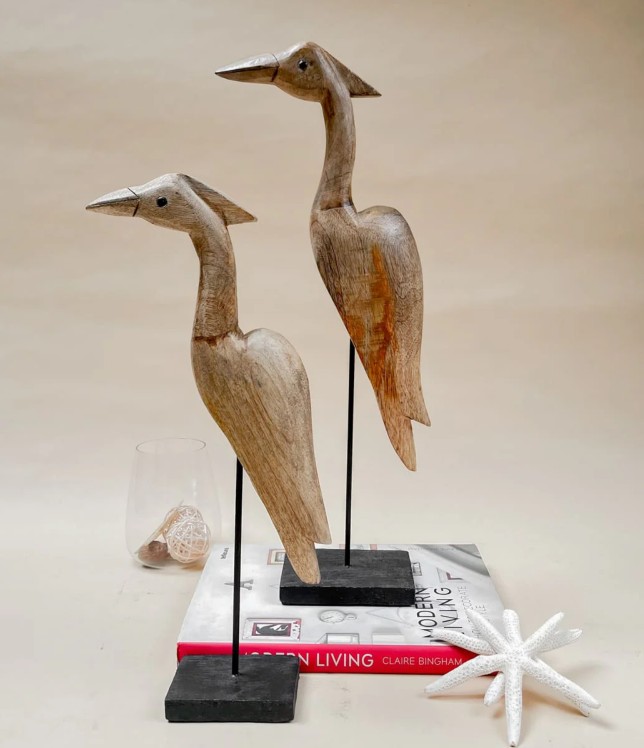
Common woods for carving include basswood, oak, walnut, and others, each with different hardness. Sculptors usually carve wood by cutting away material (using knives, gouges, chisels, even power tools) or sometimes assembling pieces of wood together.
Pros: Wood is lighter than stone or metal and relatively easy to carve with practice; it’s also renewable and abundant, which appeals to eco-minded artists. The grain can add beautiful character to the sculpture.
Cons: Wood is an organic material, so finished wood sculptures need to be kept in stable conditions—high humidity or pests can damage them over time. It also has limitations in fine detail depending on the wood type (soft wood carves easier but might not hold super fine detail; very hard wood holds detail but is tougher to work). Woodworking requires learning the grain’s behavior (carve the wrong way, and it might split).
Nonetheless, for those who love a natural, handcrafted feel, wood is an excellent medium.
Metal: Metal sculpture can take many forms: cast metal (molten metal poured into molds, typically bronze or aluminum), welded metal constructions (steel or found metal pieces joined by welding/soldering), or wire sculptures, to name a few.

Metals like bronze, iron, steel, aluminum, and copper are commonly used. Metal is prized for its strength and durability—a properly made bronze sculpture can last thousands of years.
For artists, metal offers both the possibility of fine detail (as in lost-wax bronze casting) and monumental scale (large steel or aluminum public sculptures).
Pros: Extremely durable and great for outdoor or large-scale works (metal sculptures withstand weather better than most materials). Can be polished to shine or patinated for color. Metal also allows methods like welding, which is like “sculptural construction” and lets you create abstract, geometric designs with an industrial aesthetic.
Cons: Working with metal often requires specialized skills and equipment—foundry work for casting, or welding tools and safety gear. It’s not as immediately accessible as clay or wood. Metal can be heavy (though hollow casting and thin constructions mitigate this) and expensive.
However, many artists find the results worth the effort, as metal can achieve a sense of permanence and precision that other mediums might not.
Resin & Plastics: In contemporary sculpture, artists frequently use synthetic materials like resins (polyester, epoxy, polyurethane) and plastics.

Resin Sculpture by Gillie & Marc
Resin can be cast into molds to produce a sculpture that looks like metal, stone, or any color you want. When reinforced with fiberglass, polyester resin creates a lightweight but incredibly strong shell — this is how many modern outdoor sculptures are made, as well as props and figures.
Initially, resins were used to make cheap cast copies of bronze (so-called “cold-cast bronze”), but now many sculptures are deliberately made in resin for a modern look or bright colors.
Pros: Can capture fine detail from a mold, relatively lightweight compared to metal or stone, and very durable (resin doesn’t rust or break easily; fiberglass resin is extremely tough). Also, you can pigment the resin itself, so you’re not limited to natural metal/stone colors – you can have a hot pink sculpture if you want!
Cons: Working with resin involves chemicals (the liquid resins can be toxic to breathe, and you need good ventilation and protective gear). They also require mold-making for complex shapes, which is its own skill. Over many years, some resins may discolor (e.g. a slight yellowing) or become brittle, but high-quality archival resins and UV-resistant coatings can minimize this. Resin isn’t as “prestigious” in the art world as bronze or marble, but it has opened up new possibilities for sculpture.
Many mixed-media and installation artists use resins and plastics to achieve effects impossible with traditional materials.
(Of course, there are many other sculpture media too: stone carving (marble, granite) for the truly patient and skilled, plaster and concrete for molding or building forms, found objects assemblage for mixed-media sculpture, even ice or sand for temporary works. Modern sculpture can be made out of almost anything!)
Digital Art
Digital art is created using computers or tablets and software, instead of physical materials. With digital tools, you can simulate nearly any traditional medium (there are digital “oil brush” effects, watercolor filters, etc.) or create art that is distinctly digital (pixel art, 3D models, vector graphics, and more).
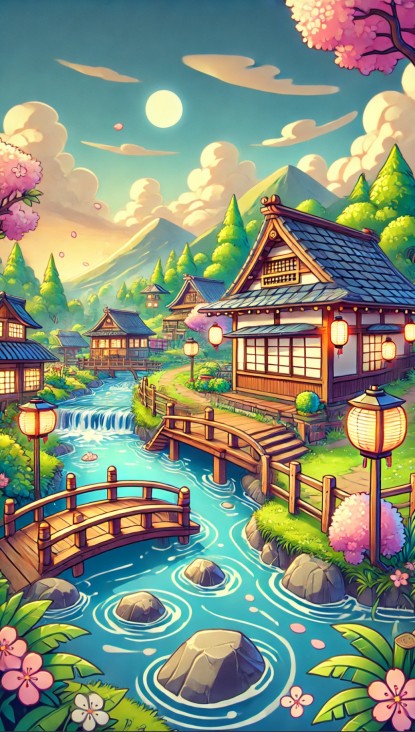
Common digital art forms include digital painting and drawing (using programs like Adobe Photoshop, Procreate, or Krita with a tablet and stylus), vector illustration (Adobe Illustrator, CorelDRAW), and digital 3D sculpture/modeling (ZBrush, Blender).
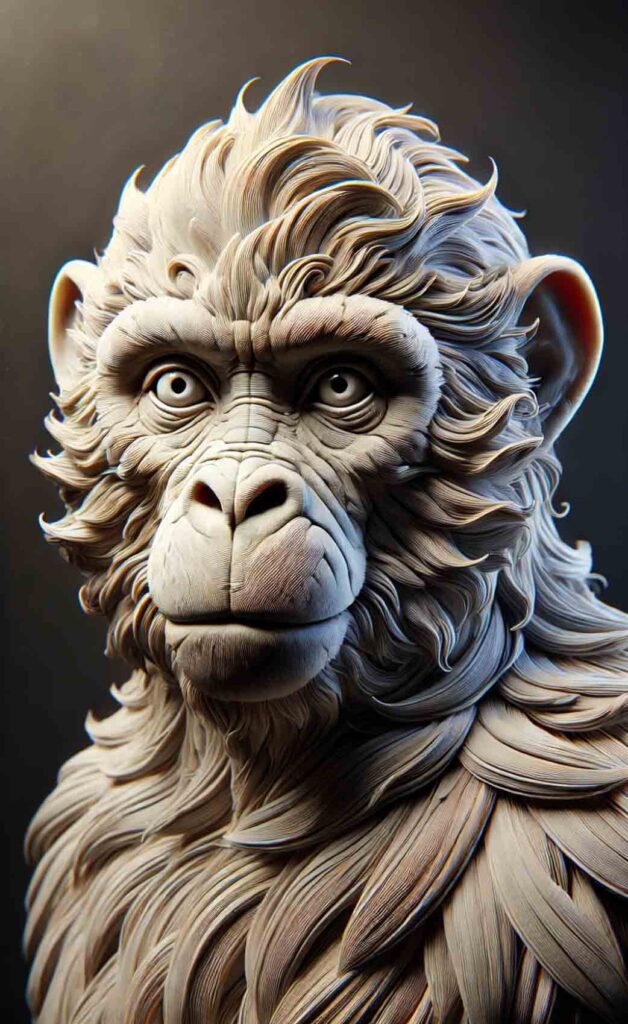
The biggest appeal of digital art is its convenience and flexibility. You have an infinite color palette, an undo button for mistakes, and you don’t have to buy new paint or clean brushes – once you have the equipment, creating additional art is low-cost and mess-free.
Digital art can also be easily distributed online or printed in various forms. As Adobe’s guide notes, efficiency is high: if you spill paint in a physical painting, it’s a crisis, but if you make a mistake digitally, a quick “Ctrl+Z” undo fixes it.
You can work from your kitchen table without needing a studio full of canvases and solvents, which makes digital very practical for those with limited space or budget. However, digital art has its considerations as well.
Pros: Nearly endless experimentation (try things, undo, use layers to separate elements), lots of tools and effects available, and no physical storage issues (hundreds of paintings can live on a hard drive). You also don’t have to worry about paint drying out or running out of a particular color – digital supplies are unlimited. Additionally, digital techniques can sometimes enhance traditional art (for example, scanning a pencil sketch and coloring it digitally).
Cons: There is no single “original” physical artwork – the art is essentially data, which some art collectors find less tangible
While you can make prints, those are reproductions (though fine art giclée prints can be very high quality and last 100+ years with archival inks.
Some artists also miss the tactile experience of traditional art; mixing paint or feeling the drag of pencil on paper is a sensory pleasure that tapping on a screen can’t replace.
As one source puts it, “Traditional art provides a tactile experience that digital mediums can’t match.”
The physical engagement and happy accidents of real media are different from digital.
It’s worth noting that digital art still requires real art skills. Drawing on a tablet demands hand-eye coordination (often you draw on a tablet while looking at a screen) and knowledge of color, composition, and technique. In fact, experts note that to be a good digital artist, you need to learn the same fundamental skills as a traditional artist
The medium is different, but the artistry is the same. The debate of digital art vs. traditional art has decreased as people realize digital art is real art – it’s simply another medium, like acrylic or charcoal, with its own workflow. Many artists today even blend the two, starting with a hand-drawn sketch, then scanning it and continuing digitally (or vice versa).
In summary, digital art is incredibly versatile and convenient. If you love the idea of painting but not the mess, or want to create art for video games/animation, digital might be the right medium for you. Just be prepared for a learning curve with the software and hardware. And if you find yourself missing the physical feel, you can always return to traditional mediums or do both. Many artists maintain both a digital and traditional practice, finding that each informs the other.
Mixed Media
Mixed media art involves combining multiple mediums in one artwork. Instead of sticking to just one method, an artist might, for example, do a drawing in ink and then add watercolor washes, or combine collage with acrylic paint and pastel. In visual art, “mixed media” describes artwork in which more than one medium or material has been employed

Jean-Michel Basquiat
This approach allows you to play to each medium’s strengths and achieve effects not possible with a single medium. For instance, you might use acrylic texture paste on a canvas and then paint over it in oils, or attach found objects to a painted background. The sky is the limit – many contemporary artworks are mixed media (assemblages, collages, multi-media installations, etc., all fall under this category).

Pros: Mixed media gives you creative freedom to break boundaries. You can merge drawing, painting, and sculpture techniques as needed, resulting in truly unique textures and visual effects
It often leads to innovation, since you discover new combinations (like using coffee stains as a background and then drawing on top!). Mixed media can also be a great way to gradually find your signature style, as you aren’t confined to one look or toolset.
Cons: Because you’re combining materials, you have to be mindful of how they interact. Not all mediums play well together (for example, oil paint applied over acrylic is fine, but acrylic over oil will peel; or certain plastics might not adhere to certain paints). The longevity of mixed media art can be an issue if not using archival materials – different aging processes might affect the piece (paper can yellow, glue can become brittle, etc.). However, careful choice of materials mitigates this. Mixed media is also hard to “categorize,” which is not really a bad thing unless you need to enter an art show under a specific medium category.
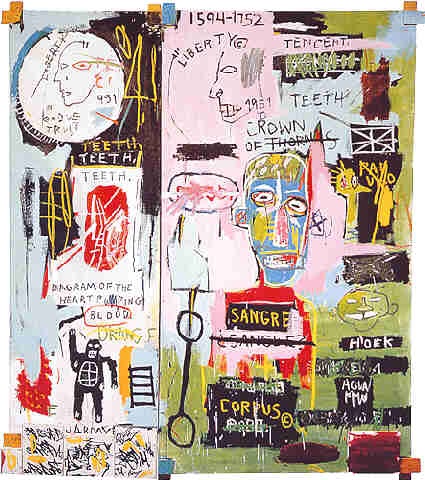
In Italian – mixed media artwork by Jean-Michel Basquiat
Overall, mixed media is about experimentation and pushing creative limits. It embodies the idea that art has no rules – you can use whatever it takes to bring your artistic vision to life. Many famous artists (from Picasso’s cubist collages to modern multimedia artists) have embraced mixed media to make groundbreaking work.
Factors to Consider When Choosing a Medium
Selecting an art medium is a personal decision, but there are some practical factors and questions to consider when finding what’s right for you. Here are four key considerations:
Artistic Style & Expression
Think about the style of art you’re drawn to and the kind of expression you want. Different mediums lend themselves to different styles. If you aim for highly realistic, detailed art, you might choose traditional media like oil paints or graphite pencil which allow meticulous blending and fine detail.
Oil paint’s slow drying is great for realism because you can constantly adjust tones, and graphite is perfect for precise shading. On the other hand, if you favor a looser, more abstract or expressive style, you might try media that encourage gestural marks and bold effects – for example, acrylics or oil pastels for painterly abstraction, or charcoal for expressive drawing.
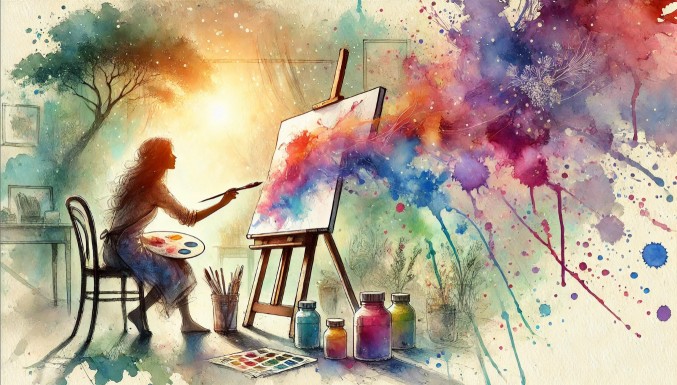
Consider the inherent qualities: watercolor is wonderful for gentle, atmospheric landscapes but might frustrate you if you want punchy, opaque color. If you love crisp lines and flat colors (say, in graphic novel art or pop art), ink or digital vector art might suit you.
Think of mediums as a vehicle for your style: What look or feeling do you want? Do you want the smooth richness of oil, the delicate transparency of watercolor, the edgy contrast of ink, or maybe the modern polished look of digital? List some artists or art styles you admire and note their mediums – this can guide you.
Ultimately, multiple mediums might achieve a style (you can do abstract art in watercolor or acrylic or digital), but choosing a medium aligned with your vision can make the process more natural.
Skill Level & Experience
Be honest about your current skill level and how much learning curve you’re ready to handle. Some mediums are more beginner-friendly than others. For example, if you’re new to painting, starting with acrylics is often recommended over oils. Acrylics are straightforward: they dry quickly and you can paint over mistakes.
Oils, while amazing, require understanding of layering (fat over lean rule), mediums, and longer patience with drying – not to mention managing toxic solvents. Similarly, in sculpture, a beginner might start with soft clay rather than jumping into carving metal or stone
That doesn’t mean you can’t begin with oils or stone if that’s your passion, but know that the technical challenges will be higher. Drawing is a fundamental skill underlying most art, so starting with pencil/charcoal to develop drawing skills is always valuable.
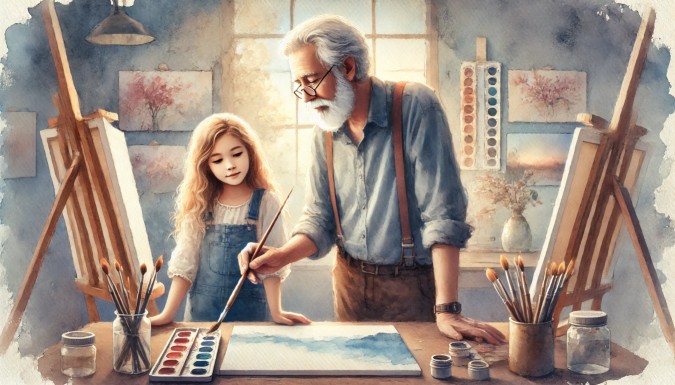
If you’re a total beginner, mediums like pencil, charcoal, ink (with practice), acrylic paint, or digital drawing programs with basic tools can be good starting points. Advanced techniques like encaustic (hot wax painting) or fresco or foundry bronze casting are usually tackled once you have some art experience and understanding of simpler media.
This factor is really about learning curve – every medium has one. Are you willing to ruin some expensive paper learning watercolors? Or would you prefer to get comfortable with cheaper media first? There’s no wrong answer, but matching your medium to your comfort level can reduce frustration. You can always move to more complex mediums as you grow. Many artists switch or add mediums as they gain experience, finding new challenges to take on.
Practical Considerations (Cost, Space, & Accessibility)
Sometimes the “right” medium for you is one that realistically fits your life. Consider cost: some media require a bigger investment. Oil paints and good canvases can be pricey (and you might need many tubes of color, plus brushes, palette knives, etc.), whereas a set of pencils and a sketchpad cost very little.
If you’re on a tight budget, you might lean towards drawing, watercolor (you only need a few tubes and some paper), or acrylics rather than, say, large-scale bronze sculpture or buying a high-end digital tablet. Likewise, consider your workspace and available tools.

Do you have a well-ventilated studio or only a corner of your bedroom? If space is limited, mediums that are compact and low-mess are ideal: drawing, watercolors, gouache, or digital (just a tablet). If you have room outdoors or a garage, maybe you can take on spray painting, resin casting, or wood carving (which would be messy or fume-producing indoors).
Also think about accessibility of materials: if you live in a rural area without art supply stores nearby, it might be hard to get specialized supplies like printmaking acids or exotic import papers. In that case, using easily available mediums (or ordering online in bulk) is key. Don’t forget health and cleanup aspects too – if you have pets or kids around, you might avoid toxic solvents (making water-based media or digital safer choices).
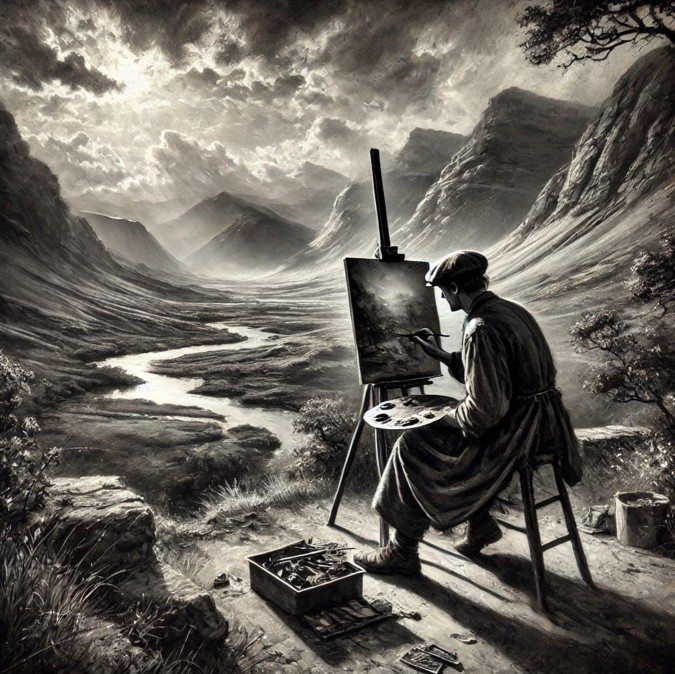
If you travel a lot or sketch outside, portable media like pen, pencil, or a tablet are practical. In short, the medium should fit into your life: an amazing medium that you never end up using because it’s inconvenient doesn’t serve you. Many artists choose a medium simply because they fell in love with it and made it work, but it’s wise to weigh these everyday factors. You can start with a medium that’s practical now and always expand later when circumstances allow. For example, you might delay learning oil painting until you can invest in the proper supplies and space. Or if you’re a student on the go, digital on a tablet might let you create wherever you are.
Longevity & Preservation
It’s worth considering how your chosen medium (and the specific materials within it) will age over time, especially if you want your artworks to last or to sell archival-quality pieces. Different mediums have different preservation concerns. Oil paintings on canvas, if properly created, can last for centuries – we have Renaissance oil paintings from the 1500s still in good condition.
However, oils can darken or develop craquelure (cracks) in the paint over a long time, especially if the paint layers were done improperly (too much oil in lower layers, etc., can cause cracking).
Acrylic paintings haven’t been around as long (only since mid-20th century), but experts generally believe high-quality acrylics will remain colorfast and flexible for a very long time, comparable to oils.
Acrylics tend not to crack like oils do (unless in very cold temperatures) and don’t yellow because they use a clear polymer binder.

Watercolors and other works on paper need protection from light and air pollutants – pigments can fade if not lightfast, and paper can deteriorate if not acid-free. When properly cared for (using archival paper and pigment, and kept out of direct sunlight), watercolors can be as archival as oil paintings, but they are usually framed behind UV glass for protection.
Drawings in pencil or ink can last a long time if done on archival paper; graphite itself is stable, and quality inks (india ink, pigment liners) are permanent, but avoid inks that are dye-based as they may fade. Charcoal and pastel works, as mentioned, can smudge – they must be sprayed with fixative and/or framed, but interestingly, pastel pigment (being pure powder) arguably has the greatest color longevity since there’s no binder to age. A pastel painting from 200 years ago can look as bright as new, whereas an oil might have yellowed varnish.
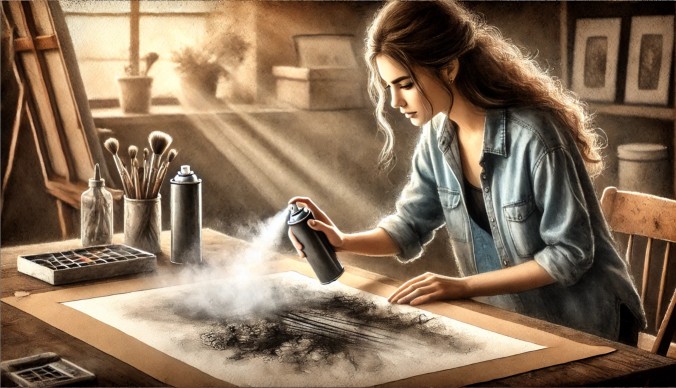
Sculptures: if you carve in stone or wood or cast in metal, those materials have their own durability (stone can erode outdoors over millennia, wood can rot if not sealed, metal can corrode without proper treatment). Bronze sculptures usually weather a patina but remain structurally intact for a very long time (think ancient bronze statues).
Modern resin sculptures are quite durable too, but some plastics might become brittle or discolor after many decades. Digital art files won’t fade or crack, but they rely on technology for viewing – you have to keep the files backed up and in accessible formats (a TIFF or PNG image file can theoretically last forever if copied to new storage over time).
If you print digital art, then it falls under print longevity: using archival pigment inks and acid-free papers can produce prints that last over 100 years without significant fading, whereas cheap home prints might fade in a few years.
Why think about longevity? If you are creating artwork for sale or display, you want to use archival techniques so the art doesn’t deteriorate quickly. Sometimes the choice of medium within a medium matters: for example, using student-grade paints with filler versus artist-grade can affect how your painting looks in 50 years. Oil pastels, for instance, never fully dry and could smudge indefinitely, so an oil pastel piece might be harder to preserve than a soft pastel that’s been fixed and framed. Mixed media works need special care to ensure one component doesn’t harm another (e.g., an acrylic ground so oil paint on paper doesn’t rot the paper).
If you create just for yourself or to learn, longevity might not be a big issue (it’s fine if a practice sketch yellows in 5 years). But it’s good to know: if you put effort into a piece you adore, using better-quality, archival materials will keep it vibrant for future generations. When choosing your primary medium, research “archival techniques for ___” to learn best practices. Often it’s not the medium itself that’s at issue, but the way it’s used and the quality of the supplies. For example, oil vs. acrylic painting longevity is often debated, but both can last for centuries if used correctly – and both can suffer if used carelessly (oils can crack, acrylics can attract dust or develop mildew in humidity, etc.). So whatever medium you choose, a bit of knowledge on preservation goes a long way.
Experimentation & Finding Your Signature Style
One of the most exciting aspects of being an artist is experimentation. You do not have to marry one medium forever! In fact, trying out different art mediums is the best way to discover what resonates with you. Each medium you experiment with will teach you something new about art and about your own preferences.
Maybe you start with pencil drawing to learn fundamentals, then explore watercolors for color – and find that you love the loose fluidity of watercolor. Or perhaps you dabble in digital art and realize you miss the feeling of paint on canvas, steering you toward traditional painting.

Every experiment is valuable. Don’t be afraid to get out of your comfort zone: if you’ve only ever drawn with pen, grab some inexpensive pastels and see what happens when you blend colors with your fingers; if you’ve always done realistic work in acrylics, challenge yourself to do a few abstract pieces with bold ink strokes or collage. These trials can lead to “aha” moments where you find your medium or a unique combination of mediums.
Over time, many artists do gravitate toward a particular medium or mix of media that becomes their signature style. This often happens organically – you notice your best work or the process you enjoy most comes, say, when you’re sculpting, or when you’re doing detailed ink illustrations with a splash of watercolor.
Follow those instincts. It’s perfectly okay (encouraged, even) to develop deep expertise in one medium once you find the one that clicks. Mastery of a medium can allow your creative voice to really shine, since you’re not struggling with the mechanics and can innovate within that medium.
However, even artists who have a primary medium will occasionally change things up to keep their creativity fresh. For example, famous painters have taken breaks to do sculpture or photography, which then informed their painting with new ideas, and vice versa.
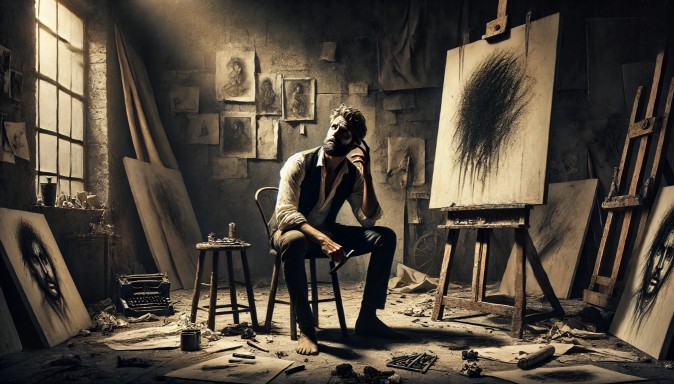
Remember that your choice is not permanent. As you evolve, you might switch mediums to suit new themes or life circumstances. An artist might start in oils in their early career, then move to digital painting later, then mix media as new projects demand. There’s no limit – you can always learn a new medium.
What matters is finding a medium that inspires you now, and using it to develop your skills and expression. Over time, through exploration, you’ll build a toolkit of mediums and techniques. This toolkit, combined with your personal way of using those mediums, contributes to your unique artistic style.
In short: experiment, explore, and enjoy the journey of finding the right medium. It’s a process of discovery. Your “signature style” will emerge from the mediums you fall in love with and the techniques you make your own. Stay curious, and don’t shy away from trying that new medium you’ve been intrigued by – it just might open up a whole new world in your art.
Conclusion
In conclusion, choosing the right medium for your art involves balancing your artistic vision with the practical realities of each medium. We’ve seen that every medium—from the rich hues of oil paint to the pixel-perfect precision of digital art—has its own character, advantages, and challenges. There is no one-size-fits-all answer to “best art mediums”; the best medium is the one that best aligns with what you want to create and what keeps you excited to make art. Consider your style, skill level, and circumstances, but also listen to your creative curiosity. Often, the medium that “feels right” will inspire you to create more and push yourself further.
Now that you’re informed about various art mediums and factors to consider, why not try something new? If you’ve always stuck to one medium, pick a small project in a completely different medium and see how it goes. You might be surprised at what you learn and how it could enhance your primary work. And if you already have a favorite medium, dig deeper and refine your techniques—mastery can be incredibly satisfying and will make your artwork shine.
We encourage you to take action: set aside some time this week to experiment with a new medium or to revisit one you set aside. Even a quick doodle with pastels or a mini painting on scrap paper can spark insights. Feel free to share your experiences or any revelations you have about finding your medium. What medium are you excited to try next? Let us know in the comments!
Happy creating! And remember, the world of art mediums is vast—embrace the exploration, and you’ll find the medium that truly resonates with your artistic soul. Keep an eye on our blog for more guides on art techniques and material tips (check out our Beginner’s Guide to Drawing and our Paint Materials 101 article for further reading), so you can continue growing on your creative journey. Now, go forth and make some art in a medium that inspires you!

0 Comments